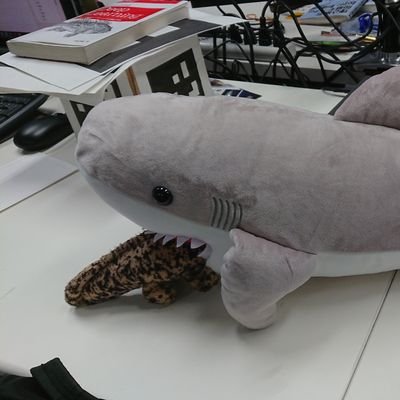結果
| 問題 | No.114 遠い未来 |
| コンテスト | |
| ユーザー |
 kei kei
|
| 提出日時 | 2018-08-06 02:20:10 |
| 言語 | C++14 (gcc 13.3.0 + boost 1.89.0) |
| 結果 |
AC
|
| 実行時間 | 1,239 ms / 5,000 ms |
| コード長 | 5,428 bytes |
| 記録 | |
| コンパイル時間 | 2,325 ms |
| コンパイル使用メモリ | 184,672 KB |
| 実行使用メモリ | 6,016 KB |
| 最終ジャッジ日時 | 2024-09-19 18:08:37 |
| 合計ジャッジ時間 | 7,852 ms |
|
ジャッジサーバーID (参考情報) |
judge1 / judge4 |
(要ログイン)
| ファイルパターン | 結果 |
|---|---|
| sample | AC * 3 |
| other | AC * 25 |
ソースコード
#include "bits/stdc++.h"
using namespace std;
typedef long long ll;
typedef pair<int, int> pii;
typedef pair<ll, ll> pll;
const int INF = 1e9;
const ll LINF = 1e18;
template<class S,class T> ostream& operator << (ostream& out,const pair<S,T>& o){ out << "(" << o.first << "," << o.second << ")"; return out; }
template<class T> ostream& operator << (ostream& out,const vector<T> V){ for(int i = 0; i < V.size(); i++){ out << V[i]; if(i!=V.size()-1) out << " ";} return out; }
template<class T> ostream& operator << (ostream& out,const vector<vector<T> > Mat){ for(int i = 0; i < Mat.size(); i++) { if(i != 0) out << endl; out << Mat[i];} return out; }
template<class S,class T> ostream& operator << (ostream& out,const map<S,T> mp){ out << "{ "; for(auto it = mp.begin(); it != mp.end(); it++){ out << it->first << ":" << it->second; if(mp.size()-1 != distance(mp.begin(),it)) out << ", "; } out << " }"; return out; }
/*
<url:https://yukicoder.me/problems/no/114>
問題文============================================================
=================================================================
解説=============================================================
================================================================
*/
/*
最小シュタイナー木 : http://www.prefield.com/algorithm/dp/steiner_tree.html
無向グラフgに対して、指定した部分集合Tを全て連結にした木(シュタイナー木)を作る際に選択した
辺の最小コストを返す
Tのサイズは高々13,頂点数は40程度が限界?
T : 部分集合配列(重複可能)
g : グラフの隣接行列
*/
const ll MAX_V = 14;
const ll MAX_N = 40;
ll OPT[1<<MAX_V][MAX_N];
ll minimum_steiner_tree(const vector<int>& T,const vector<vector<ll>>& g){
const int n = (int)g.size();
const int numT = (int)T.size();
if(numT <= 1) return 0;
vector<vector<ll>> d(g);
for(int i = 0; i < n;i++){
for(int j = 0;j < n;j++){
for(int k = 0; k < n;k++){
d[j][k] = min(d[j][k],d[j][i]+d[i][k]);
}
}
}
for(int S = 0; S < (1<<numT);S++){
for(int x = 0; x < n;x++){
OPT[S][x] = INF; // or LINF
}
}
for(int p = 0; p < numT;p++){
for(int q = 0; q < n; q++){
OPT[1<<p][q] = d[T[p]][q];
}
}
for(int S = 1; S < (1<<numT);S++){
if(!(S&(S-1))) continue;
for(int p = 0; p < n;p++){
for(int E = 0; E < S;E++){
if((E|S)==S) OPT[S][p] = min(OPT[S][p],OPT[E][p]+OPT[S-E][p]);
}
}
for(int p = 0; p < n;p++){
for(int q = 0; q < n;q++){
OPT[S][p] = min(OPT[S][p],OPT[S][q]+d[p][q]);
}
}
}
ll ret = INF;
for(int S = 0; S < (1<<numT);S++){
for(int q = 0; q < n;q++){
ret = min(ret,OPT[S][q]+OPT[((1<<numT)-1)-S][q]);
}
}
return ret;
}
struct edge{
int u,v; ll cost;
edge(int u = 0,int v = 0,ll cost = 0):u(u),v(v),cost(cost){}
};
struct UnionFind {
vector<int> data;
UnionFind(int size) : data(size, -1) { }
bool unionSet(int x, int y) {
x = root(x); y = root(y);
if (x != y) {
if (data[y] < data[x]) swap(x, y);
data[x] += data[y]; data[y] = x;
}
return x != y;
}
bool findSet(int x, int y) {
return root(x) == root(y);
}
int root(int x) {
return data[x] < 0 ? x : data[x] = root(data[x]);
}
int size(int x) {
return -data[root(x)];
}
};
ll solve(){
ll res = LINF;
int N,M,T; cin >> N >> M >> T;
vector<vector<ll>> G(N,vector<ll>(N,INF));
vector<edge> edges(M);
for(int i = 0; i < N;i++) G[i][i] = 0;
for(int i = 0; i < M;i++){
int a,b; ll c; cin >> a >> b >> c;
a--; b--;
G[a][b] = G[b][a] = min(G[a][b],c);
edges[i] = edge(a,b,c);
}
vector<int> t(T);
for(int i = 0; i < T;i++){
cin >> t[i]; t[i]--;
}
if(T < 14){
res = minimum_steiner_tree(t, G);
}else{
sort(edges.begin(),edges.end(),[](const edge& e1,const edge& e2){return e1.cost < e2.cost;});
ll cand_num = N-T;
vector<ll> cands;
vector<int> can_use(N);
for(auto& v:t) can_use[v] = true;
for(int v = 0; v < N;v++) if(!can_use[v]) cands.push_back(v);
for(int i = 0; i < (1<<cand_num);i++){
for(int j = 0; j < cand_num;j++) if((i>>j)&1) can_use[cands[j]] = true;
// kruskal begin
ll C = 0;
UnionFind UF(N);
for(int j = 0; j < M;j++){
int u = edges[j].u,v = edges[j].v; ll cost = edges[j].cost;
if(can_use[u] == false || can_use[v] == false) continue;
if(UF.findSet(u, v)) continue;
C += cost;
if(res < C) break;
UF.unionSet(u, v);
}
for(int i = 0; i < T;i++){
if(!UF.findSet(t[0],t[i])){ C = INF; break;}
}
res = min(res,C);
// kruskal end
for(int j = 0; j < cand_num;j++) if((i>>j)&1) can_use[cands[j]] = false;
}
}
return res;
}
int main(void) {
cin.tie(0); ios_base::sync_with_stdio(false);
cout << solve() << endl;
return 0;
}
